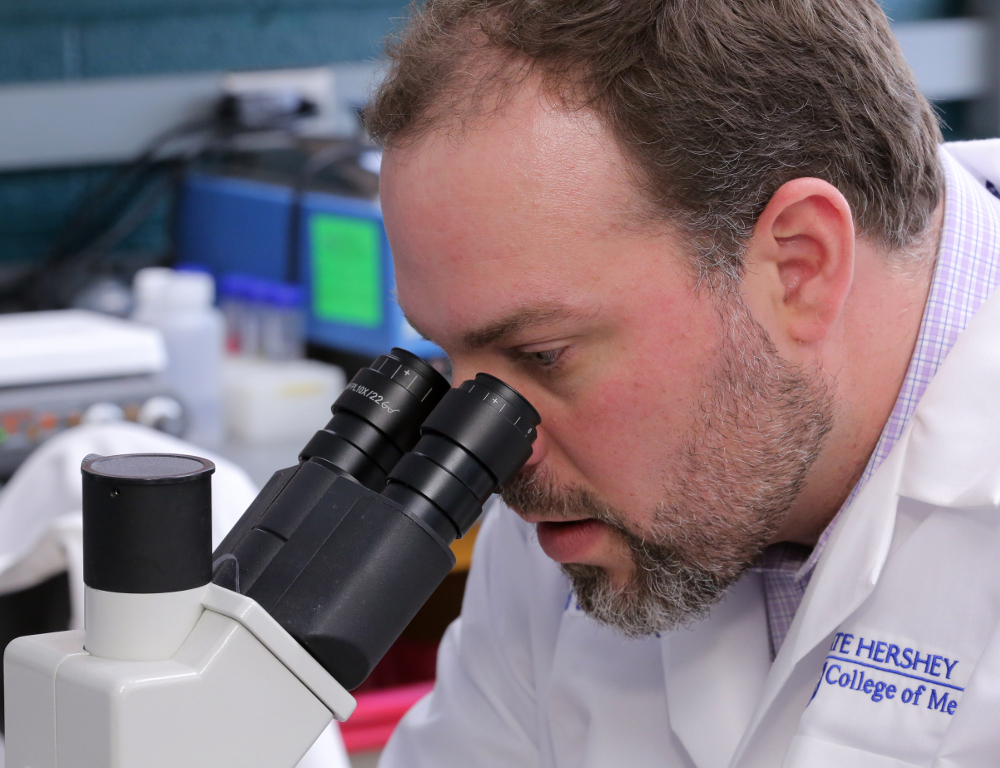Research to uncover factors behind bladder cancer progression receives ACS grant

A network of transcription factors may drive different subtypes of aggressive bladder cancer, allowing researchers to turn one type of tumor into another
To find new therapies for aggressive bladder cancer, researchers must first uncover what drives each subtype at the molecular level. That's why the American Cancer Society has awarded a grant to study bladder cancer development to Dr. David DeGraff, assistant professor of pathology, surgery and biochemistry and molecular biology, and a member of Penn State Cancer Institute.
“If we find out which molecular factors are related to the development and prognosis of certain types of bladder cancer, we can identify patients with specific disease subtypes early. Then we could marshal resources and even identify who may benefit most from chemotherapy or other clinical treatments,” DeGraff explained. “That's very exciting to me.”
DeGraff and his research colleagues study a set of transcription factors—proteins that decide which genes will be expressed—called the TFAP2 family and PPARG. In earlier research, DeGraff and others found that these transcription factors are linked to two subtypes of aggressive bladder cancer: basal-squamous and luminal. When TFAP2 factors are found in high levels, people are more likely to have basal-squamous bladder cancer. But when PPARG is very active, it cooperates with other factors to promote the luminal cancer subtype in patients.
“We want to test the direct role of these transcription factors in the development of aggressive disease and response to chemotherapy. This grant will fund the basic science behind that,” DeGraff said. The American Cancer Society awarded DeGraff its Research Scholar Grant—designed to support investigator-initiated cancer research projects—totaling $791,996 over four years.
>>> READ MORE: From One Cancer To Another (Penn State Medicine)
“The TFAP2 factors affect bladder cancer cells by regulating genes, and we want to know which of those genes may be targetable with additional therapeutic approaches,” DeGraff says. “If we understand what makes a given type of tumor tick, we may even be able to force it to become another type of tumor—one that responds to therapy.”
DeGraff envisions that this research will dovetail with his studies in patients with bladder cancer subtypes. If the factors can be used to predict how patients respond to therapy, patients' tumors can be checked for these transcription factors. Doctors can then prescribe the treatment that will most likely be effective.
“You can identify new therapies once you understand what to target,” DeGraff says. “That's what most important—getting the resources to help the patient faster.”
If you're having trouble accessing this content, or would like it in another format, please email Penn State Health Marketing & Communications.
